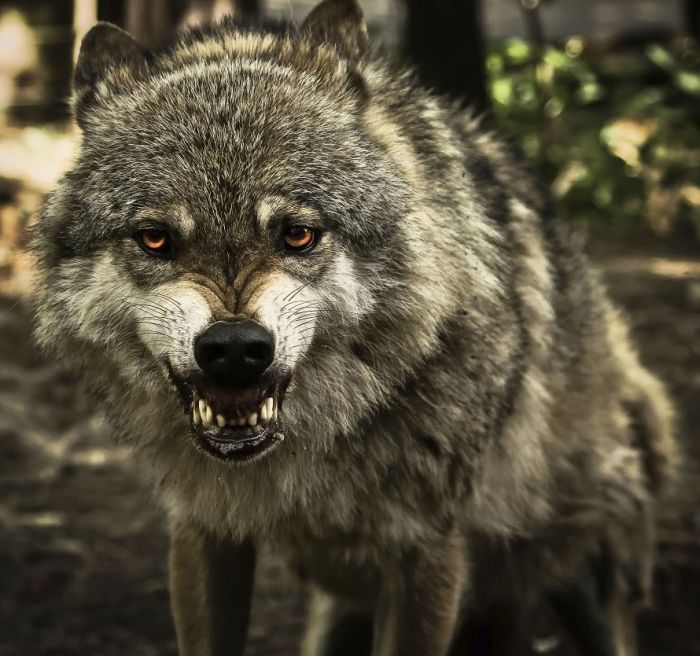|
|
Gray Wolf
|
• Wolf-dogs
Although dogs and wolves are genetically very close, and have shared vast portions of their ranges for millennia, the two generally do not voluntarily interbreed in the wild. They can produce viable offspring, with all subsequent generations being fertile, as opposed to coydogs and jackal-dog hybrids. The captive breeding of wolf-dog hybrids has proliferated in the United States, with 300,000 such animals being present there. The most commonly used dog breeds for this purpose are of the spitz group. Although wolves normally kill dogs, lone wolves may fraternise with guard or herding dogs as surrogate pack members. Most wolf-dog matings in the wild involve female wolves soliciting male dogs. Wolf-hybrids may be bolder than pure wolves, and thus more dangerous to livestock and human life. In the wild, hybrids may preferentially associate and mate with dogs and other hybrids and live on the periphery of human settlements more readily. Although wolf-dog hybridisation in Europe has raised concern among conservation groups fearing for the wolf's purity, an analysis on the mtDNA sequences show that introgression of dog genes into European wolf populations does not pose a significant threat. Also, as wolf and dog mating seasons do not fully coincide, the likelihood of wild wolves and dogs mating and producing surviving offspring is small. Like pure wolves, hybrids breed annually, though their mating season occurs 3 months earlier, with pups mostly being born in the winter period, thus lessening their chances of survival. Although it is popularly believed that some Inuit tribes mate their sled dogs to wolves in order to improve their stamina, this is likely untrue, as wolf hybrids are generally unable to cooperate effectively in pulling harnesses, and their stamina is much less than that of sled dogs. At least two wolf-dog breeds have been created in Europe, the Saarlooswolfhond and the Czechoslovakian Wolfdog, both by crossing wolves with German shepherds.
• Coywolves
The offspring is generally intermediate in size to both parents, being larger than a pure coyote, but smaller than a pure wolf. A study showed that of 100 coyotes collected in Maine, 22 had half or more wolf ancestry, and one was 89 percent wolf. A theory has been proposed that the large eastern coyotes in Canada are actually hybrids of the smaller western coyotes and wolves that met and mated decades ago as the coyotes moved toward New England from their earlier western ranges. These eastern coyote populations also have fewer sweat glands in their pawpads than western coyotes, but have more than wolves. Researchers in the Northeast and Canada say the population of coywolf hybrids is growing in the Northeast region. The red wolf is thought by certain scientists to be in fact a wolf/coyote hybrid rather than a unique species. Strong evidence for hybridization was found through genetic testing which showed that red wolves have only 5% of their alleles unique from either gray wolves or coyotes. Genetic distance calculations have indicated that red wolves are intermediate between coyotes and gray wolves, and that they bear great similarity to wolf/coyote hybrids in southern Quebec and Minnesota. Analyses of mitochondrial DNA showed that existing red wolf populations are predominantly coyote in origin.
|
|









